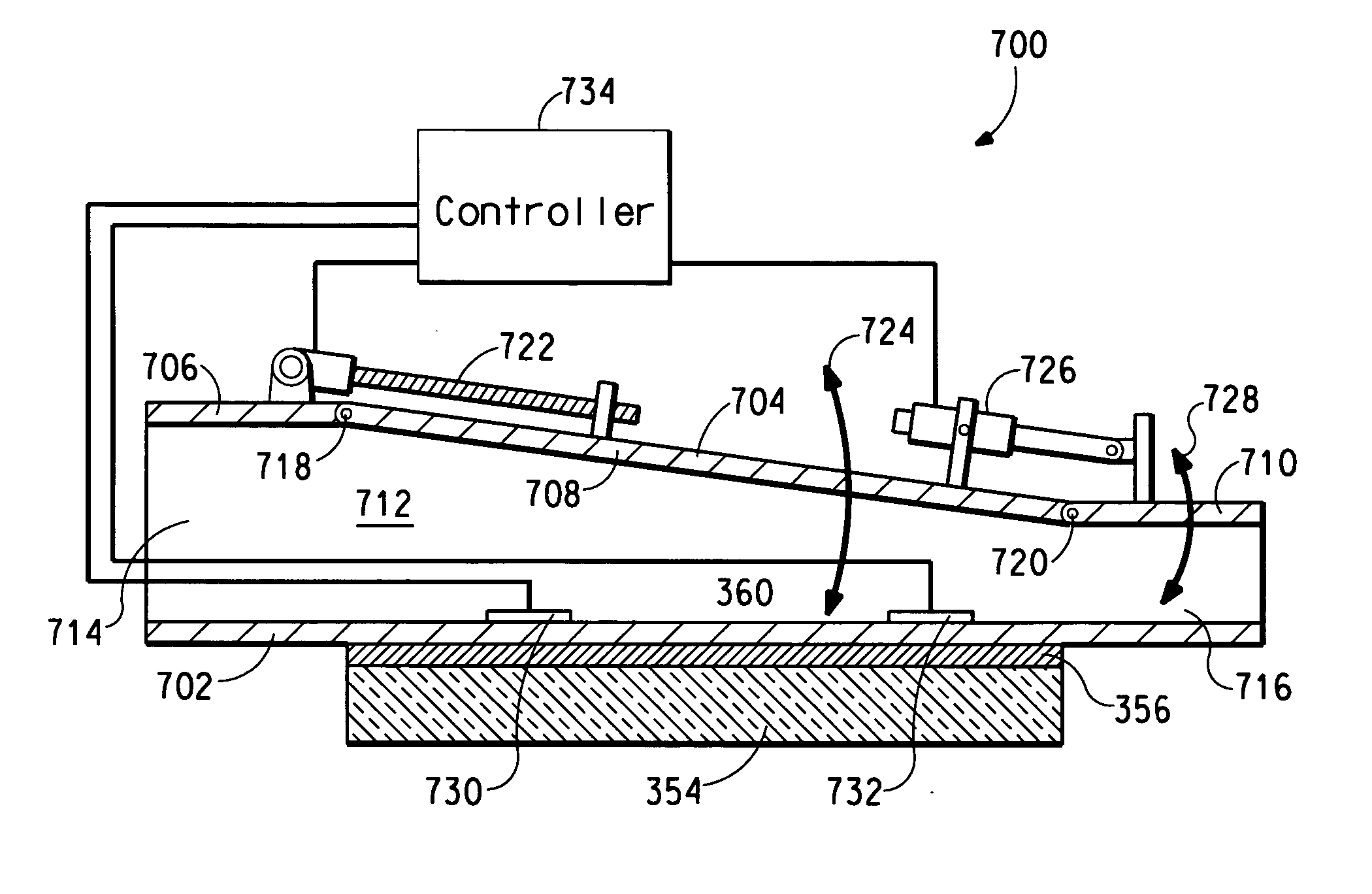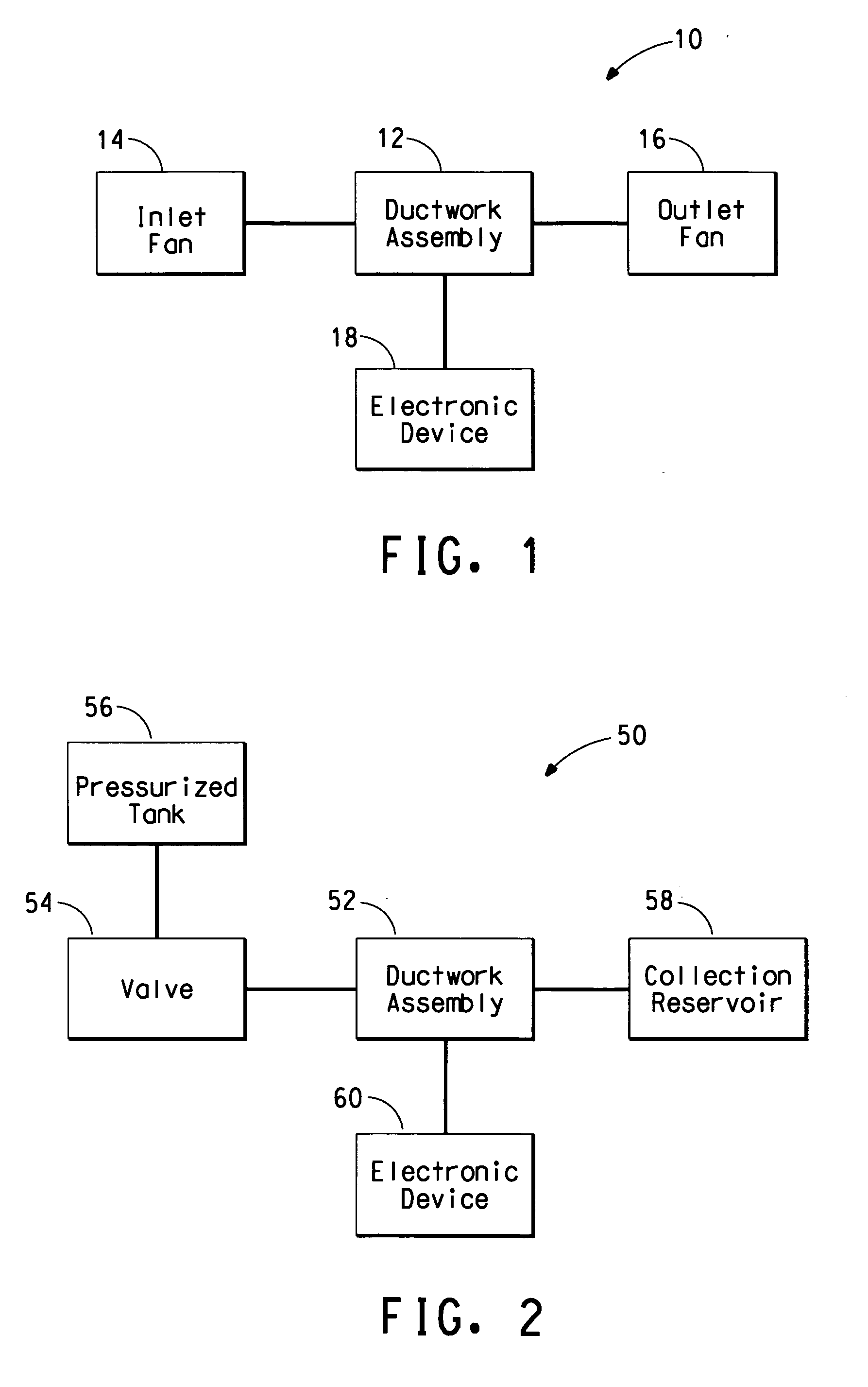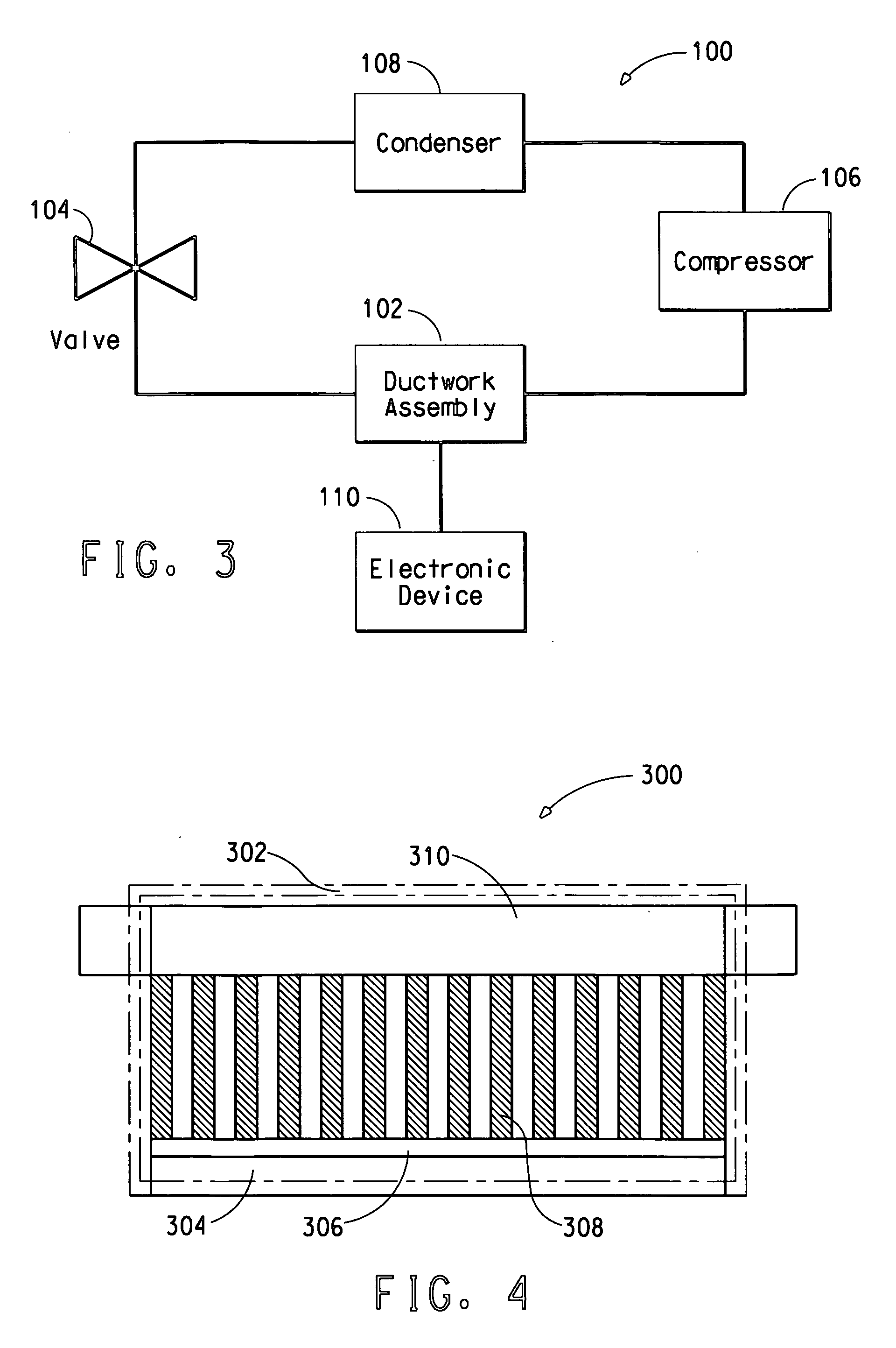Electronic device having a temperature control system including a ductwork assembly
a technology of temperature control system and electronic device, which is applied in the direction of incadescent cooling arrangement, discharge tube main electrode, television system, etc., can solve the problems of significant temperature rise in the device, significant panel heating, and inability to stably operate the driven oled display in such applications
- Summary
- Abstract
- Description
- Claims
- Application Information
AI Technical Summary
Benefits of technology
Problems solved by technology
Method used
Image
Examples
first embodiment
[0084] Referring initially to FIG. 1, a temperature control system for an electronic device is depicted and is generally designated 10. As depicted in FIG. 1, the temperature control system includes a ductwork assembly 12 to which an inlet fan 14 can be fluidly connected, e.g., to an inlet end established by the ductwork assembly 12. The ductwork assembly 12 can be any of the ductwork assemblies described in conjunction with FIG. 4 through FIG. 18. Note that temperature control systems including ductwork assemblies are not limited only to those illustrated in FIG. 4 through FIG. 18. After reading this specification, skilled artisans will be able to apply other temperature control systems with ductwork assemblies that fit their particular needs or desires.
[0085]FIG. 1 further illustrates that an outlet fan 16 can also be fluidly connected to the ductwork assembly 12, e.g., to an outlet end established by the ductwork assembly 12. Moreover, as illustrated, the ductwork assembly 12 can...
second embodiment
[0087]FIG. 2 depicts a temperature control system, generally designated 50. As depicted in FIG. 2, the temperature control system 50 includes a ductwork assembly 52, e.g., one or more of the ductwork assemblies described in detail below. A valve 54 is fluidly connected to the ductwork assembly 52, e.g., to an inlet end established by the ductwork assembly 52. In one embodiment, the valve 54 is a regulator valve. In turn, a pressurized tank 56 is fluidly connected to the valve 54. The pressurized tank 56 can include a heat transfer fluid as a liquid, a compressed gas, or a supercritical fluid. In one embodiment, the heat transfer fluid within the pressurized tank 56 can be nitrogen, carbon dioxide, a noble gas (e.g., helium, neon, argon, krypton xenon, radon), other relatively inert gas, or any combination thereof and can be stored in the pressurized tank 56. FIG. 2 further illustrates a collection reservoir 58 that can be fluidly connected to the ductwork assembly 52, e.g., to an ou...
third embodiment
[0089] Referring now to FIG. 3, a temperature control system is portrayed and is generally designated 100. As depicted in FIG. 3, the system includes a ductwork assembly 102 to which a valve 104, such as an expansion valve, is fluidly connected, e.g., to an inlet end established by the ductwork assembly 102. A compressor 106 is fluidly connected to the ductwork assembly 102, e.g., to an outlet end formed by the ductwork assembly 102. Further, the valve 104 is fluidly connected to the compressor 106 via a condenser 108. Thus, a closed loop is established by the valve 104, the ductwork assembly 102, the compressor 106, and the condenser 108. FIG. 3 also illustrates an electronic device 110 that is thermally coupled to the ductwork assembly 102. As described below, the electronic device 110 can be cooled by the ductwork assembly 102.
[0090] In one embodiment, the closed loop, established by the valve 104, the ductwork assembly 102, the compressor 106, and the condenser 108, can include ...
PUM
 Login to View More
Login to View More Abstract
Description
Claims
Application Information
 Login to View More
Login to View More - R&D
- Intellectual Property
- Life Sciences
- Materials
- Tech Scout
- Unparalleled Data Quality
- Higher Quality Content
- 60% Fewer Hallucinations
Browse by: Latest US Patents, China's latest patents, Technical Efficacy Thesaurus, Application Domain, Technology Topic, Popular Technical Reports.
© 2025 PatSnap. All rights reserved.Legal|Privacy policy|Modern Slavery Act Transparency Statement|Sitemap|About US| Contact US: help@patsnap.com



